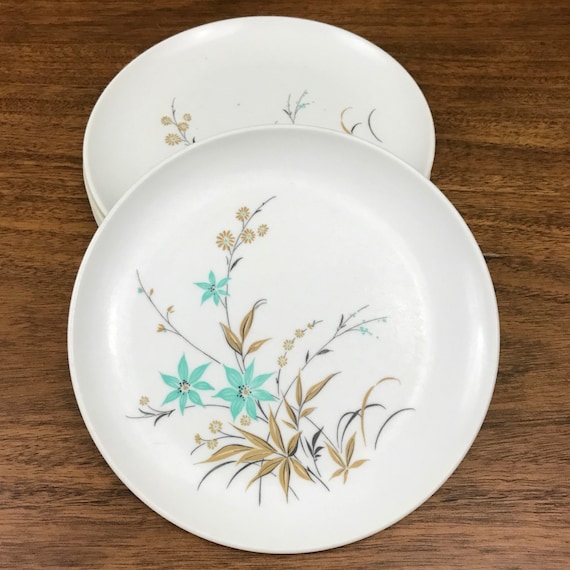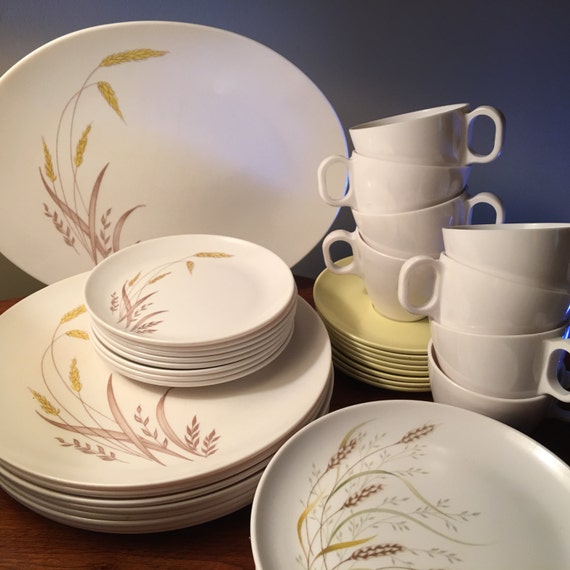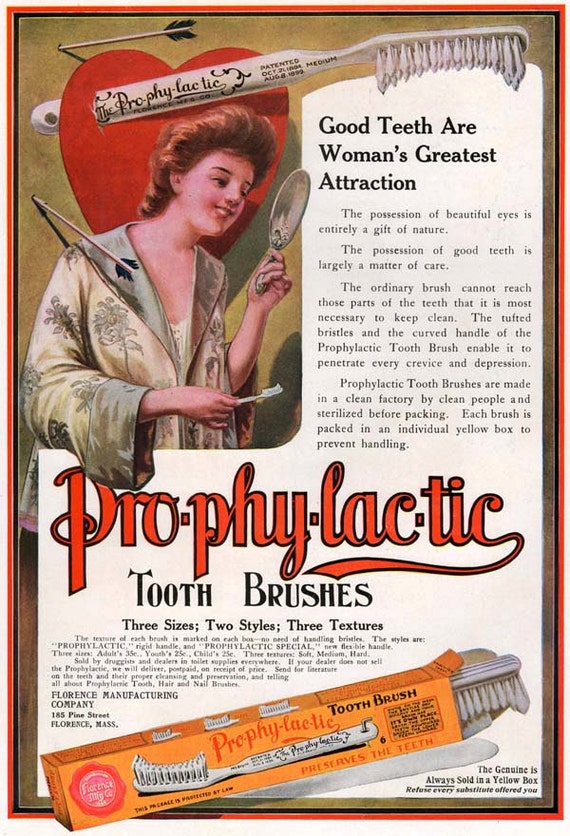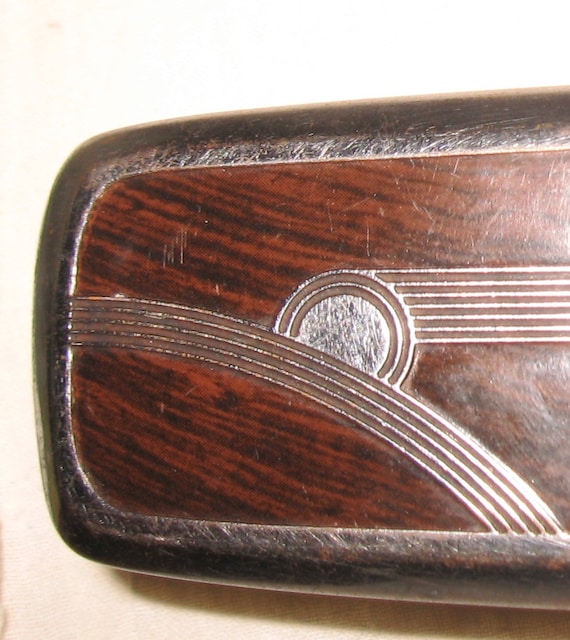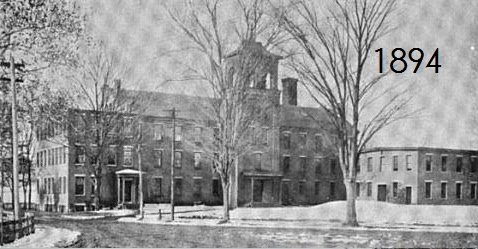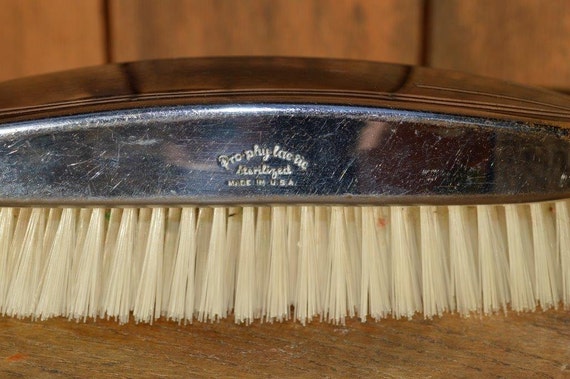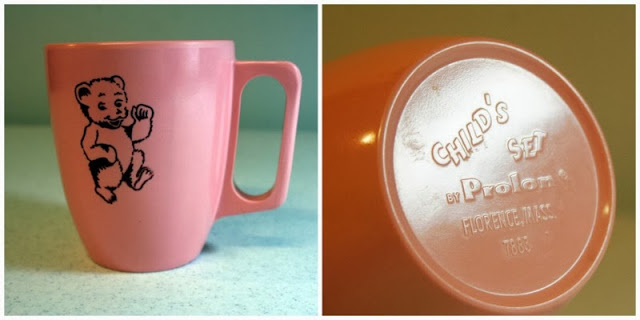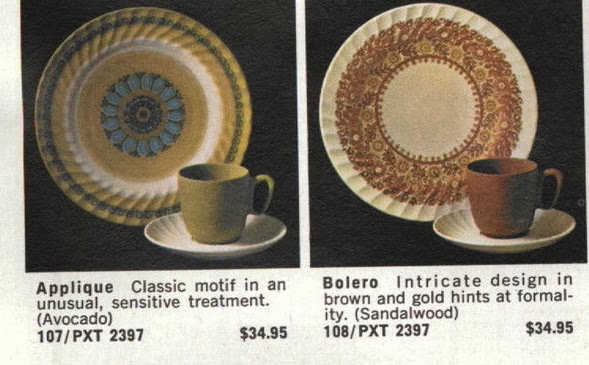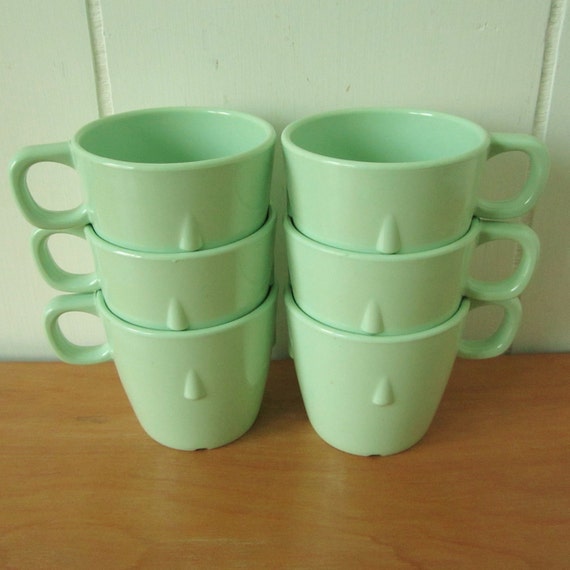Save now, pay later?
Why Are There A Million Paper Trays Clogging Up My Landfill ?
It's no lie I'm a greenie, and I sometimes get some flack for my views on using melamine school lunch trays. Today I'd like to explain my views on why I think the budget cuts affecting most school's use of melamine (plastic) lunch trays as (released in an article dated March 2010 on American Public Media, removed after this article was written) was a ridiculous use of "save now pay later" to our environment.
In my opinion, continual re-use of
one melamine school tray day after day by the same student saves 200+ paper trays from trees that are going into the trash and into our landfill. Someone may challenge me saying, "Paper trays break down into our dumps." To that I'd come back with, "These trays aren't always made using a green process, and may contain harmful bleach and additives that break down and pollute our environment." So, with my estimate, let's look at the larger picture:
 |
| Melamine cafeteria trays like these have survived year after year, great photo and these items by SouvenirSouvenir on Etsy. |
Let's talk about my estimate.....
In one year one melamine tray can save 200 trays per student. I theorize this by a standard school year averaging around 180 days, and then add in teachers and staff buying lunches and come up with this low estimate.
Let's talk one year, one school...
In a school with 500 students eating lunches once a day, (based on a school of 800 students with 300 bringing their own lunches which in my opinion, again, is a low estimate) this low-estimate alone would equate to minimum 10,000 paper trays saved from the landfill per year with only 600-800 melamine trays being produced-(the school should order enough to cover all students.) That's just a minimum....
Let's talk five years, one school...
In a five year period this school would produce 52,000 paper trays (*low end estimate) in garbage (taking into consideration a small growth rate of students) as opposed to still using the same 600-800 melamine trays as these trays are hard to break, very durable, and can last a lifetime if proper care is done.
Let's talk ten years, one school...
Over ten years that's over 108,000 paper trays (*low end estimate and growth rate of students) clogging up our landfills! Taking into consideration the school wants to replace some of their trays, let's say they reorder 400 of them over time, we are only up to 1200 maximum melamine trays having in today been produced ONCE versus 108,000 paper trays.
Let's look at a ten year span of just the schools near you...
Now that may not sound bad to you for one school, but let's say there's ten schools within a thirty mile radius of your area, (many more here in Baltimore...) that's even worse....100,000 trays
per year just out of the schools near you, and a million plus trays just out of your district clogging up our landfills over a ten year period....now add up all the schools in your state and GASP! Billions of paper lunch trays!
Where is the environmentalism in this thought process? If you don't believe me, why not read
this study?
Melamine Fears and Misconception...
Most people are worried about "harmful processes" being used in plastics production, and much related to the horror stories of the melamine tainted baby milks, feed, and dog food. I'm here to tell you
all of this related to production outside of the USA, and I'm no supporter of this either. I've been touched by these issues. My 12 year old basset hound Stella was a victim of eating tainted dog food I bought here in the US, (imported from China) and died from kidney failure, much to my dismay--by the time I learned of the recall it was too late. On that note, I urge everyone to keep up on the recall lists here for their pets.
What about USA Production?.
I can't bring Stella back but if I had my way these melamine trays being made by
Prolon in the USA out of Port Gibson, Mississippi would be used in schools everywhere in the US! Why? Our country has strict regulations on pollutants and manufacturing processes and
Prolon being right here under our nose does not only follow these guidelines but still believes in making their melmac right here in the USA! They employ the locals and give back to our suffering economy! Even if this isn't in their best interest to do so (producing in China would make them way more money!)
 |
| Si-Lite used to manufacture all these fiberglass trays in America as shown and offered by JetSetVintage. I assume at one time or another you may have eaten off one in a school lunch line, hospital, or cafeteria. |
Let's talk history here...
We must remember the oldies-but-goodies companies such as Texas-Ware (Plastics Manufacturing Corporation) and Si-Lite of Chicago have merged into larger manufactures such as Carlisle of Oklahoma, which does a lot of outsourcing to China and Mexico for obvious lower cost of production. (According to this company profile page claims it has manufacturing plants in the United States, China, and Mexico.) I don't know about you, but I'd much rather go with a company that produces only in America like Prolon to stimulate our economy more so. Let's face it, any production today in America is rare.
Prolon today is a dying breed. Collectors may remember it's vintage dishes, originally produced in Florence, Massachusetts. (see at the end for the link to my lengthy history of the company.)
 |
| Old Prolon Factory recently sold for close to a million dollars and will be refurbished into office buildings, says this article. Photo Credit: NEREJ |
 |
| Retro dishes for consumer use by Prolon circa 1950's as shown and offered by 5gardenias. |
About the lunch tray:
In 1950, College and University Business magazine boasted that Prolon Melmac dishes had tested satisfactory for thickness and weight in a six month product testing in college and hospitals. As of this edition, it was "available to order in green, blue, yellow, and buff by (distributor) Parker D. Perry. Inc Dept CUB 729 Boylston Street, Boston, 16 Mass. The trays were a popular items.
The school-frenzy continued in 1951 in in Nation's Schools publications with an article on Prolon's "The New Melmac" again indicating
PROLON PLASTICS, a division of PRO-PHY-LAC-TIC BRUSH COMPANY
Florence, M
ass. MOLDERS OF FINE PLASTICS -- Local distributors Parker D. Perry."
The company was very smart to continually promote their lunch trays to hospitals, cafeterias and commercial industry such as schools.
By the md 1950's the company was still producing melmac dishes out of Massachusetts. Here's an ad from Life Magazine circa 1956 of which they were still listed....
All good things must come to an end or do they?.
I am unclear just when the Massachusetts factory closed, and when Prolon's dinnerware molds were acquired to Mississippi, but if we go by the 45 year run as advertised by Prolon in Mississippi at the time of this article, that would put us around 1965 which would be confusing since Florence and Pro Company was still operational in Massachusetts at that time. It's factorires still making some form of plastics, but perhaps the money was no longer in the dishes hence the dish division sold.
Enter the small factory in Port Gibson, Mississippi. Mr. Steve Gluck, as of my conversations with him in 2009, is owner and at the helm of marketing the company's wares to restaurants, institutions, and companies everywhere. He boasted that Prolon will do small runs for small companies unlike larger adversaries which require giant minimum-run orders. Not many other companies will do this.
Mr. Gluck's company still remains a player in employing Port Gibson locals, even though most other companies in the area are just empty shells of what they once were proving the downfall of the economic crises. Prolon now competes with other companies whose wares are from China, no doubt negatively impacting their profit margin.
According to the company's website, "
Prolon has been manufacturing high quality melamine dinnerware, accessories and plastic storage containers for the foodservice industry for over 45 years.
Prolon manufactures all of its thermoset and injection molded products in a state-of-the- art facility in Port Gibson, Mississippi. We have led the industry in introducing new uses for melamine and plastic dinnerware in the foodservice industry."
 |
| This large Prolon platter is that of the original molds from Florence, and is still available to the restaurant industry today! Photo Credit: Prolon |
In Summary...
Sadly, I don't see how using so many paper trays are cost effective in comparison to buying, sanitizing, and reusing the melamine ones. Paper products in general are expensive. Not to mention, buying American made products gives back to our economy, and how is that a bad thing? I am wondering if the paper trays schools are buying in bulk are made here in the USA? I would bet not.
Many schools have unmassed their melamine trays, and so you find tons of Ebay, Etsy and collector sites now.
Have your kid write a term paper on this!.
Why would the school systems in the United States cut corners now, and pay later? Why would they not buy American Made melamine and save our dumps, and save money in the long run? Perhaps this is something for you and your children to think about, and write their school term paper about, to convince their Principals to go to their Board of Education and explain why these paper trays they are eating off of today are affecting our environment LATER. It may be our grandchildren cleaning up the mess.
The answer is simple, we should have kept the lunch trays and saved a few ba zillion trees.




